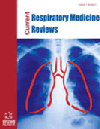
Full text loading...
We use cookies to track usage and preferences.I Understand

Asthma is a chronic inflammatory disorder of the respiratory airways that is characterized by narrowing of airways, wheezing, difficulty in respiration, shortness of breath, stiffness in the chest region, and sometimes cough. In some cases, mucus secretion is enhanced. Several factors precipitate asthma. These factors may contribute individually or collectively to the pathophysiology of asthma. The objective of this review is to compile a detailed description of pathways involved in asthma. This compilation helps provide a better understanding of the disease. The information provided in this review may be used for planning a personalized therapy. Besides pathways, this review includes the current therapy used for asthma management. New combinations of drugs targeting multiple pathways can be developed to better manage the disease.

Article metrics loading...

Full text loading...
References


Data & Media loading...